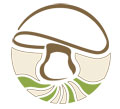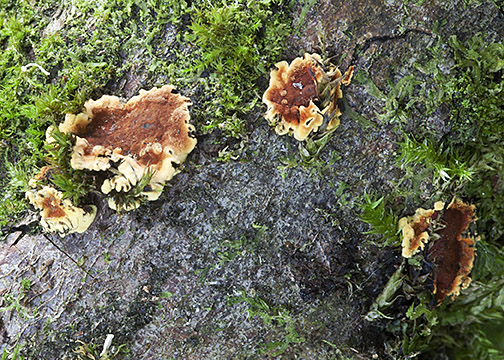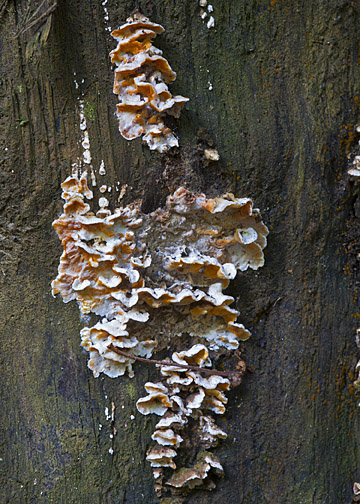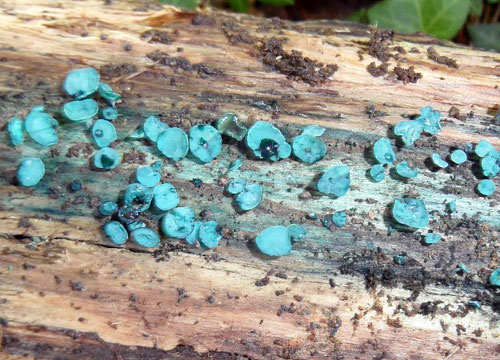Hillier Gardens
Sat 4 Aug 2012
Field event ID HF1209
OS Grid areas: SU3723
Weather: There had been continuing showers and sunny spells the previous week but the torrential rains due to the jetstream had stopped a couple of weeks previously.
Report: With still no sign of a summer flush of agarics we felt we were going to have to work hard for our entrance to Hillier Gardens and events proved us to be right. We welcomed two newcomers to the group - Anne Turner and Celia Cox which made a surprising total of eleven forayers given the conditions. We made our way through the Pinetum and then down along the edge of the gardens where some native willows and poplars can be found. On the way Sara Cadbury noticed Claviceps purpurea (Ergot) growing on one of the grasses, a reminder that this toxic species is still present. A fresh collection of Chlorociboria aeruginascens (Green Elfcup) provided a good photo opportunity followed shortly after by the brightly coloured Hypoxylon subticinense in contrast to the usual dark appearance of Hypoxylon. The firesite and woodpile proved productive as well as being a suitable spot for lunch. On one of the conifer stumps was the distinctive bracket of Skeleotcutis amorpha with its orange pink pore surface whilst the firesite was home to the pink discomycete Pyronema omphalodes, a species we have only found on a few occasions. On the way to the firesite Sue Rogerson found some more small discomycetes which turned out to be the second Hamsphire record for Lasiobelonium variegatum. The first specimen, which was also found by Sue at Moortown, was only finally identified after discussion with Zotto Baral at a BMS ascomycete workshop in 2011. It is always worth collecting from unusual trees in an arboretum and a sample of pine needles from Pinus ayacahuite var veitchii was found to harbour Meloderma desmazieri another second record for Hampshire. Careful collecting, once again, had found sufficient fungal bodies to keep interest alive and had produced some interesting finds.
Species list: Bulgaria inquinans, Calocera viscosa, Chlorociboria aeruginascens, Claviceps purpurea, Daedalea quercina, Datronia mollis, Diatrypella quercina, Exidia glandulosa, Fuscoporia ferrea, Ganoderma australe, Humaria hemisphaerica, Hymenochaete carpatica, Hymenochaete rubiginosa, Hypoxylon subticinense, Lachnum virgineum, Lasiobelonium variegatum, Lasiosphaeria ovina, Marasmiellus ramealis, Marasmius rotula, Meloderma desmazieri, Merismodes fasciculata, Mycena tenerrima, Peniophora incarnata, Phanerochaete sordida, Phanerochaete velutina, Phlebiella sulphurea, Polyporus leptocephalus, Pyronema omphalodes, Schizopora paradoxa, Skeletocutis amorpha, Skeletocutis nivea, Stereum hirsutum, Stypella dubia, Trametes versicolor, Trichaptum abietinum, Vuilleminia comedens







